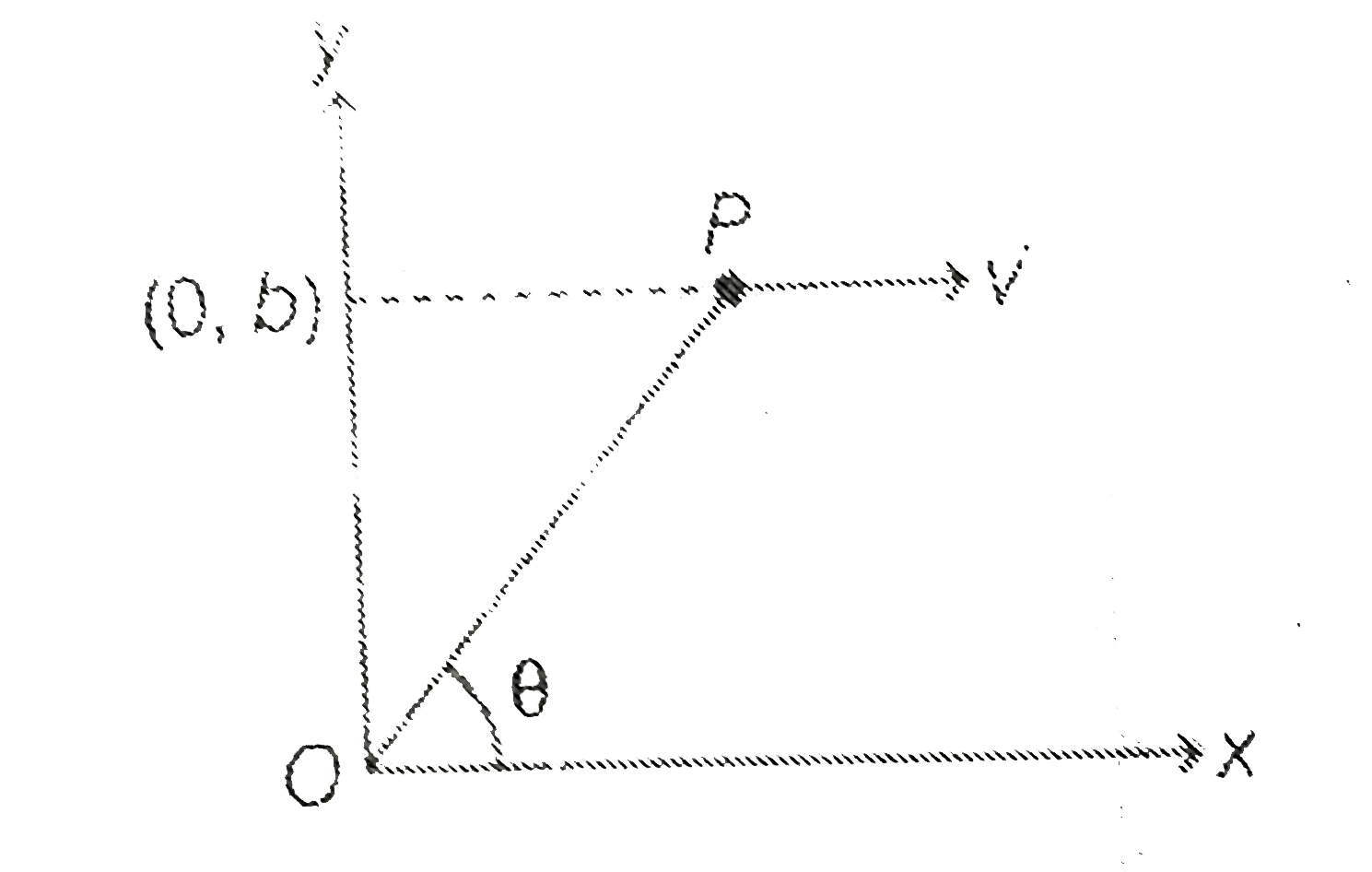Two particles move parallel to x - axis about the origin with the same amplitude and frequency. At a certain instant they are found at distance A3 from the origin on opposite sides but their velocities are found to be in the same direction. What is the phase difference between the two ?
Let equation of two SHM be
x1=Asinωt …(i)
x2=Asin(ωt+ϕ) …(ii)
Given, A3=Asinωt
and −A3=Asin(ωt+ϕ)
Which gives sinωt=13
sin(ωt+ϕ)=−13
From Eq. (iv), sinωt cosϕ+cosωt sinϕ=−13
⇒13cosϕ+√1−19sinϕ=−13
Solving this equation, we get
or cosϕ=−1,79
⇒ϕ=π or cso−1(79)
Differentiating Eqs. (i) and (ii) we obtain
v1=Aωcosωt
and v2=Aωcos(ωt+ϕ)
If we put ϕ=π, we find v1 and v2 are of opposite signs .Hence, ϕ=π is not acceptance.
∴ϕ=cos−1(79)
Similar Questions
Two particles move parallel to x−axis about the origin with same amplitude 'a' and frequency ω. At a certain instant they are found at a distance a/3 from the origin on opposite sides but their velocities are in the same direction. What is the phase difference between the two?
View SolutionTwo particles execute SHM of same amplitude and frequency on parallel lines. They pass one another when moving in opposite directions each time their displacement is half of their amplitude. What is the phase difference between them?
View Solution
Knowledge Check
Two particles execute SHM of same amplitude and frequency on parallel lines. They pass one another when moving in opposite directions each time their displacement is one third their amplitude. What is the phase difference between them?
A0B2π3CπDπ6Two particles execute SHMs of the same amplitude and frequency along the same straight line. They cross one another when going in opposite direction. What is the phase difference between them when their displacements are half of their amplitudes ?
A60∘B30∘C120∘D150∘
Two bodies performing S.H.M. have same amplitude and frequency. Their phases at a certain instant are as shown in the figure. The phase difference between them is
_E01_002_Q01.png)
View SolutionA particle is moving parallel to x-axis as shown in the figure. The angular velocity of the particle about the origin is

View SolutionTwo particles execute simple harmonic motion of the same amplitude and frequency along close parallel lines. They pass each other moving in opposite directions each time their displacement is half their amplitude. Their phase difference is
View SolutionTwo particles undergo SHM along parallel lines with the same time period (T) and equal amplitudes. At particular instant, one particle is at its extreme position while the other is at its mean position. The move in the same direction. They will cross each other after a further time.
View SolutionTwo particles are executing simple harmonic of the same amplitude (A) and frequency ω along the x-axis . Their mean position is separated by distance Xo. (Xo>A). If the maximum separation between them is (Xo+A), the phase difference between their motion is:
View SolutionTwo particles are in SHM with the same amplitude and frequency along the same line and about the same point. If the maximum separation between them is √3 times their amplitude, the phase difference between them is 2πn. Find value of n
View Solution
